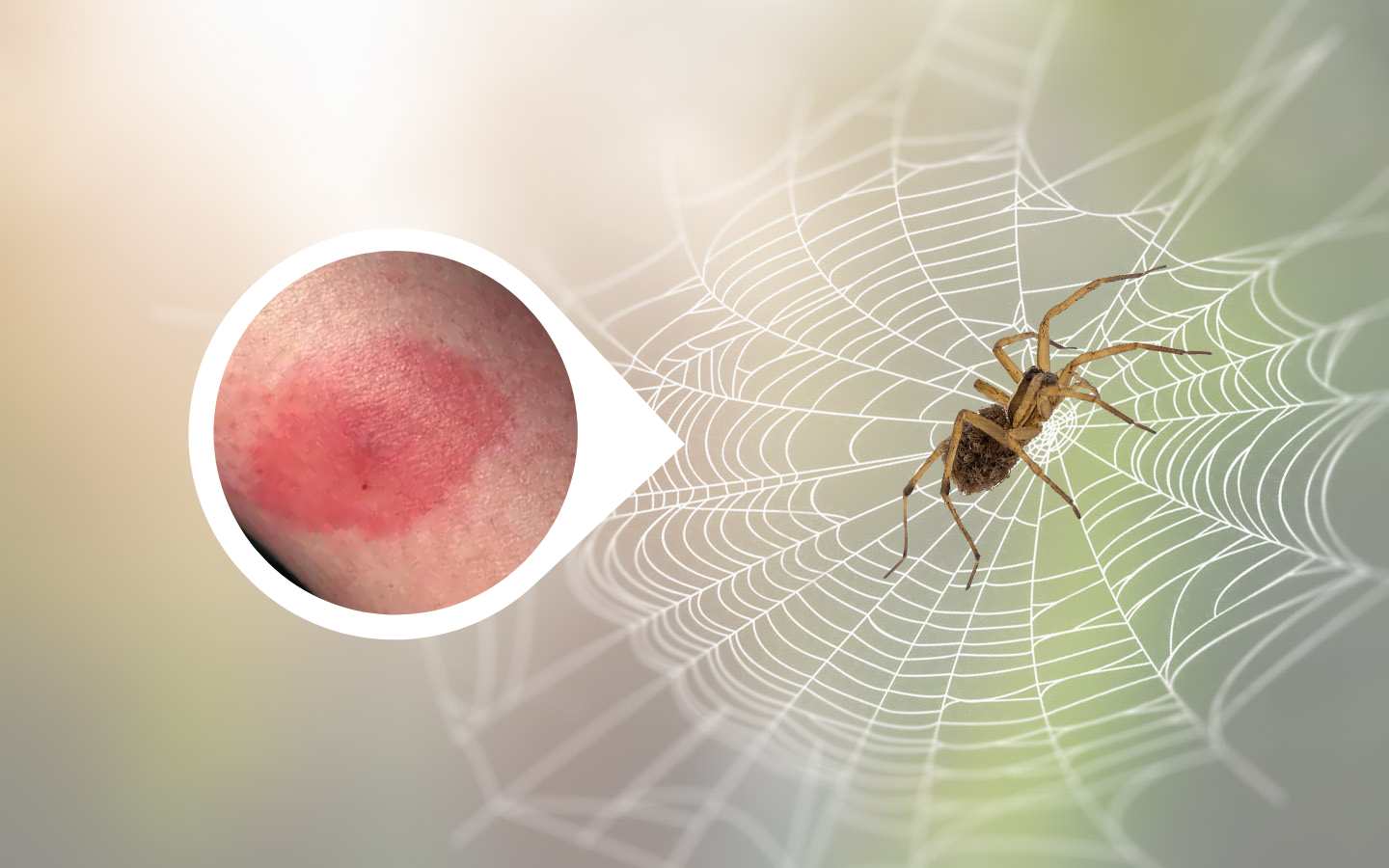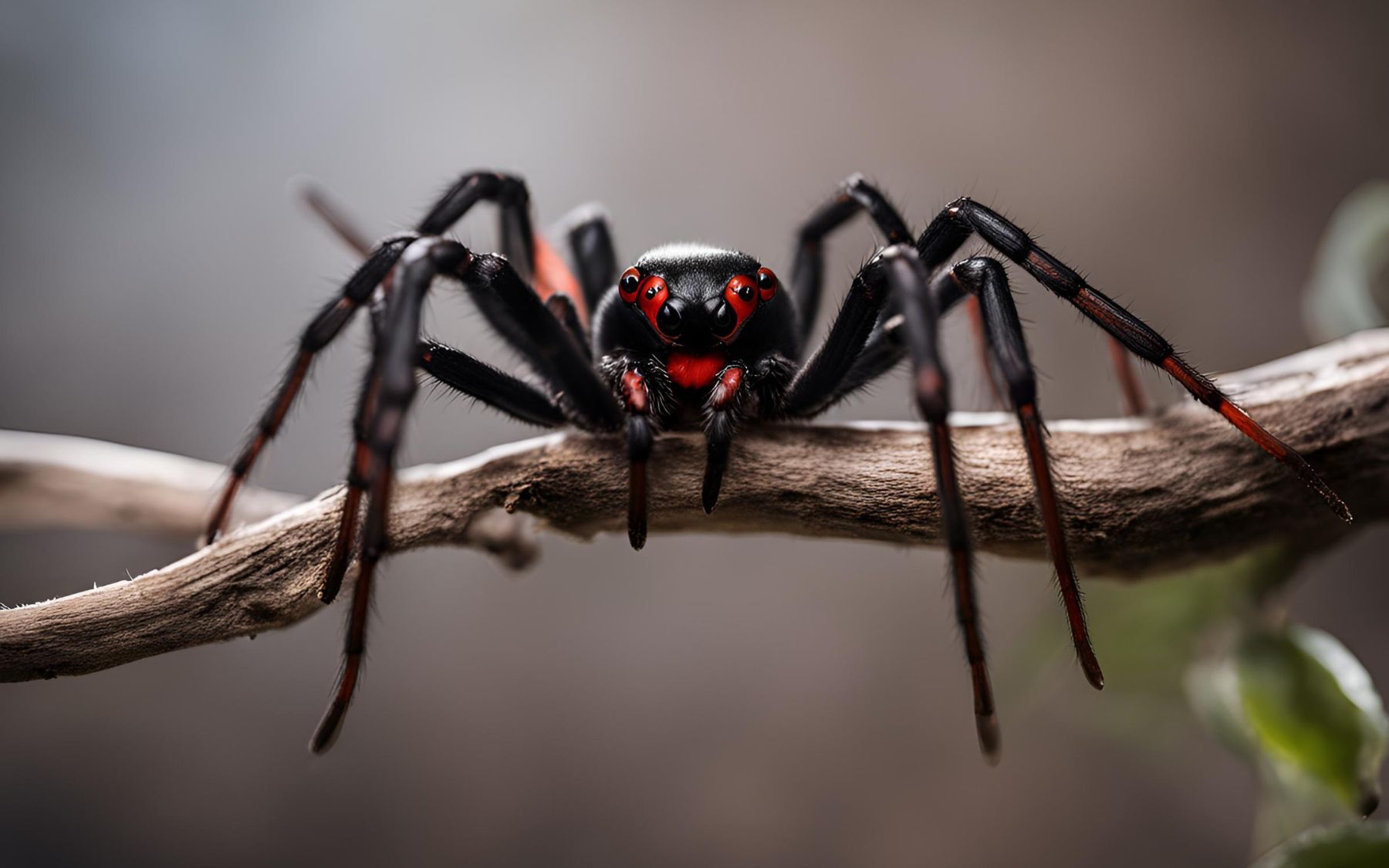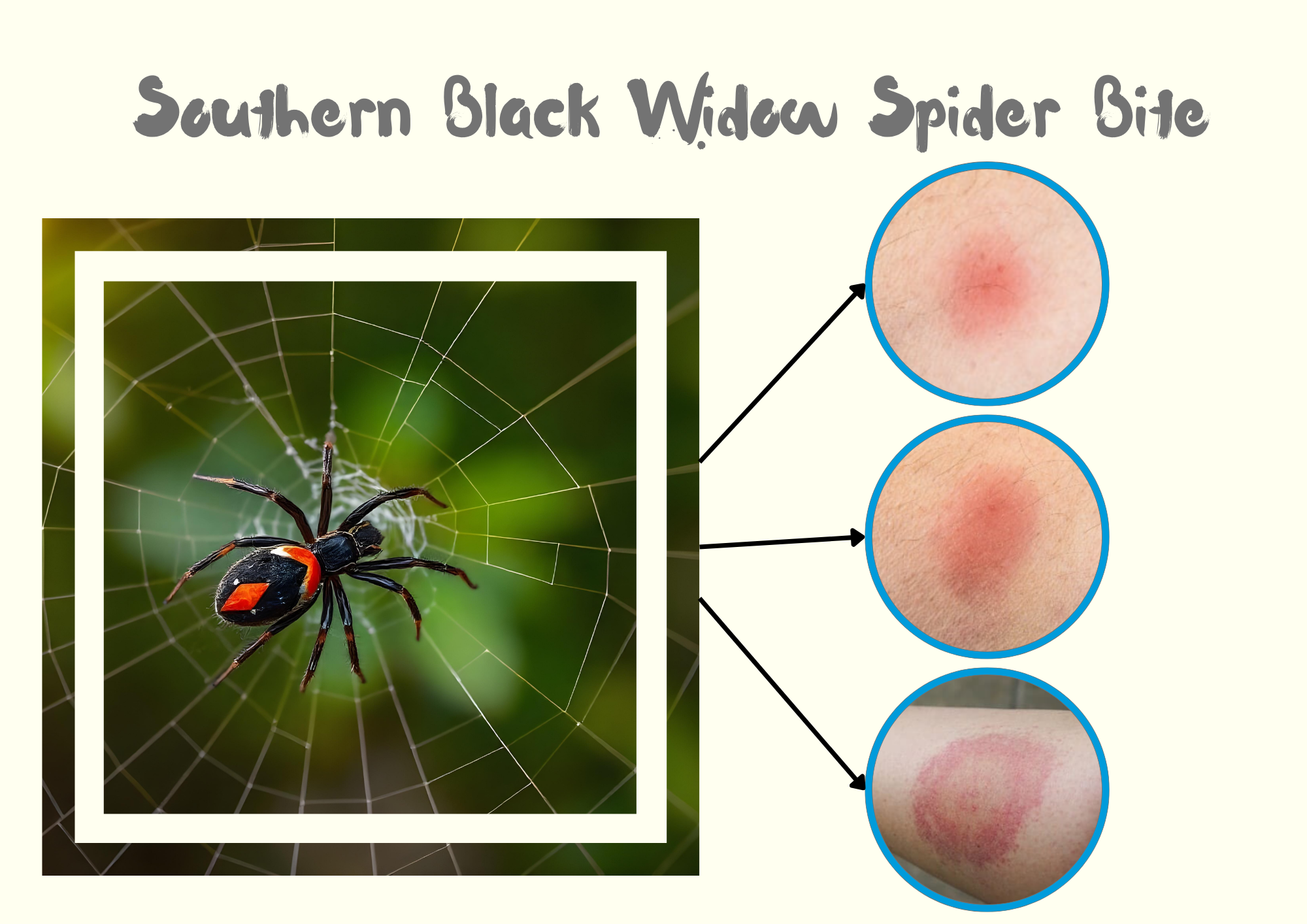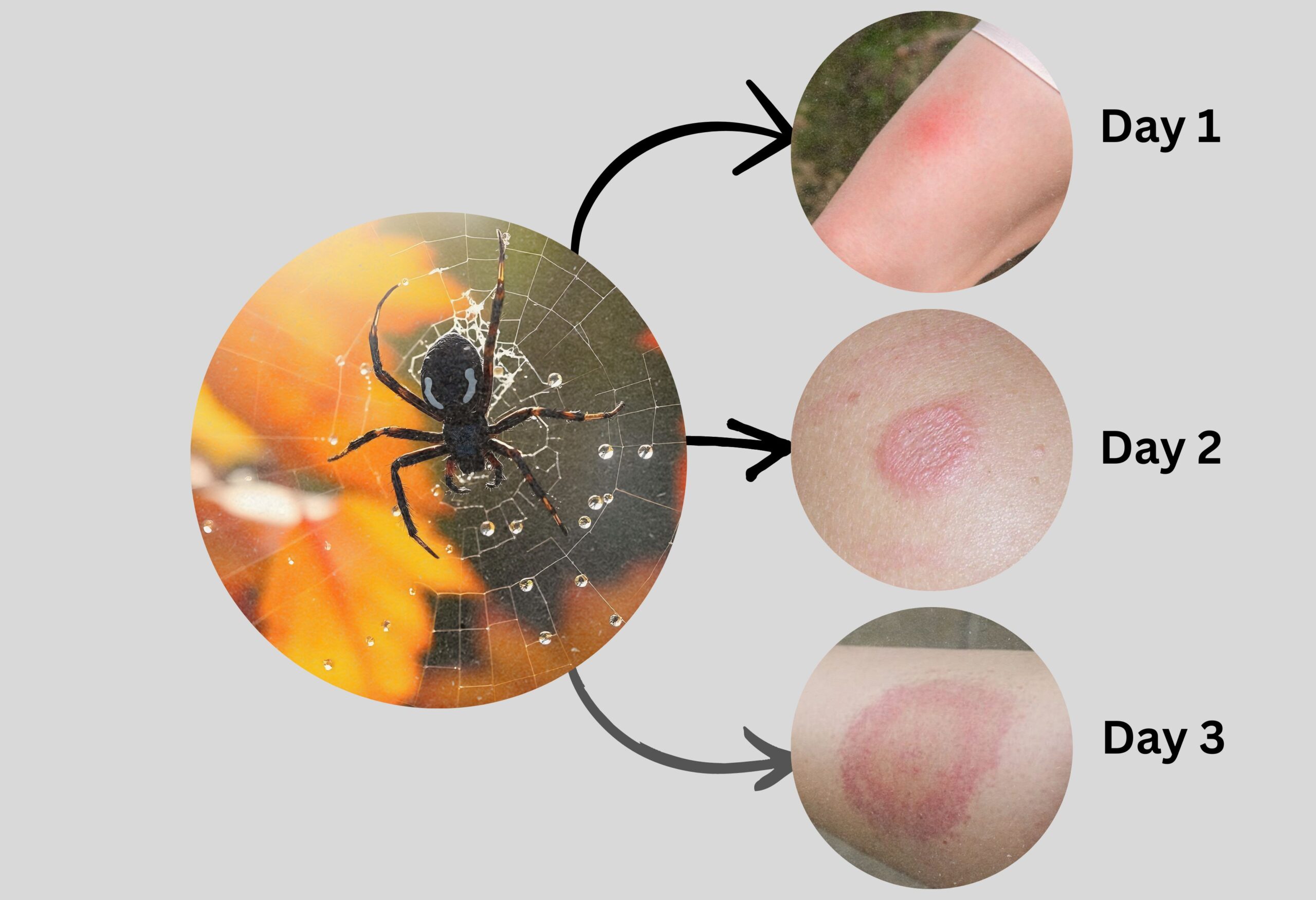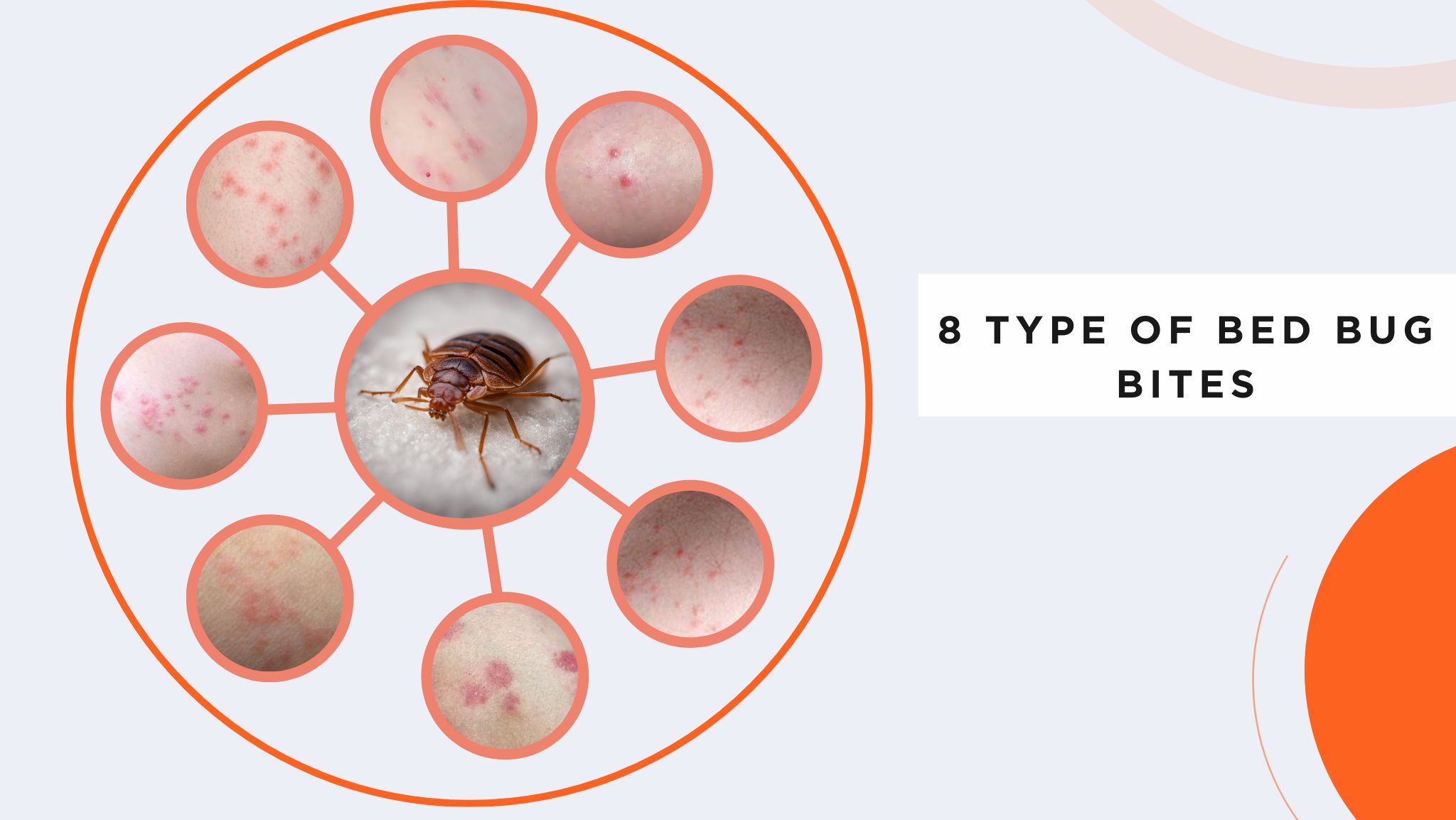Wolf spiders are ground-dwelling hunters commonly found in gardens, forests, grasslands, and residential areas like basements and garages. They are known for their agility, speed, and excellent vision.
Wolf spider bites differ from other spider bites as they are usually defensive and cause mild symptoms like redness, swelling, and pain. Unlike bites from more venomous spiders, wolf spider bites are generally not dangerous and heal with basic first aid.
Wolf Spider Bite Stages
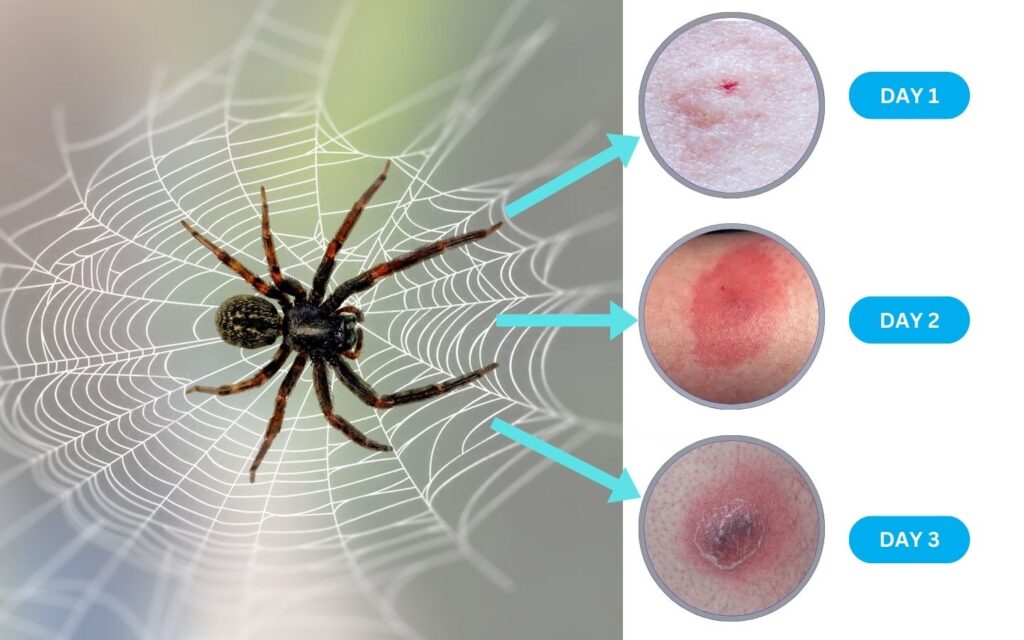
Day 1 Wolf Spider Bite Stage
On the first day of a wolf spider bite, the initial symptoms typically include mild to moderate redness, slight swelling, and localized pain at the site of the bite. The bite area may look like two small puncture marks surrounded by a red, irritated patch of skin. Some people may experience a stinging sensation immediately after the bite, which can subside quickly but leave behind mild irritation.
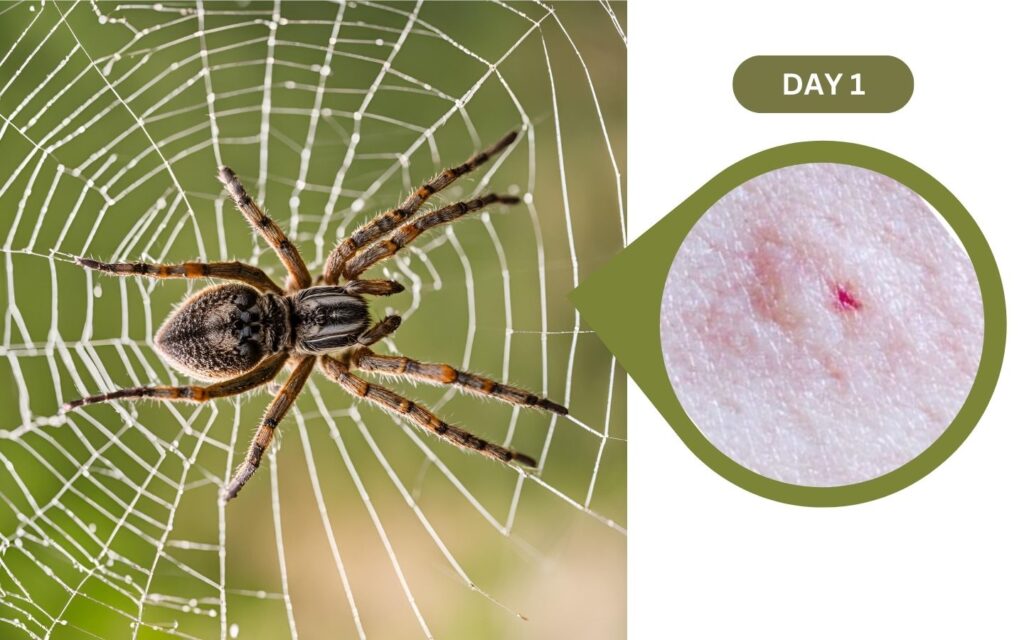
Possible First-Aid Steps to Manage Symptoms on the First Day:
- Clean the Bite: Wash the bite area gently with soap and water to reduce the risk of infection.
- Apply Ice: Use an ice pack or a cold compress wrapped in a cloth to reduce swelling and numb the pain. Apply for 10 minutes, then remove for 10 minutes, and repeat as needed.
- Elevate the Area: If the bite is on a limb, elevate it to reduce swelling.
- Pain Relief: Over-the-counter pain relievers, such as ibuprofen or acetaminophen, can help manage pain and inflammation.
- Avoid Scratching: Scratching can increase irritation and risk of infection.
Day 2 Wolf Spider Bite Stage
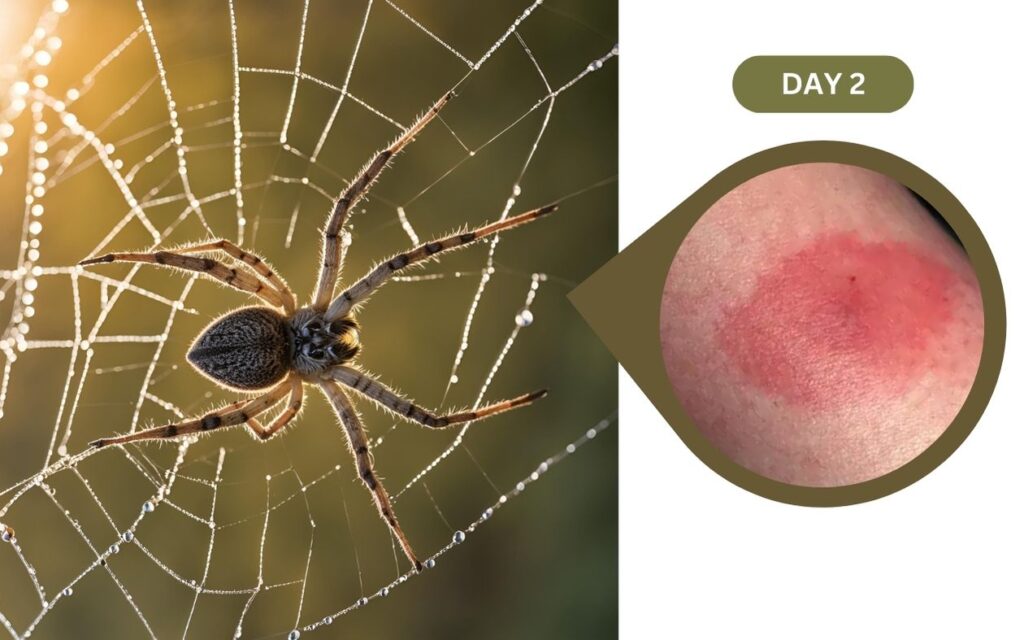
On the second day, symptoms may progress, with increased redness, swelling, and possibly the formation of a small blister or raised bump. The bite area may start to feel warm to the touch, and itching or a burning sensation is commonly reported. Some people may also experience mild muscle aches or fatigue around the bite area.
Suggested Treatments to Reduce Discomfort:
- Topical Creams: Applying an over-the-counter hydrocortisone cream or an antihistamine cream can help alleviate itching and reduce inflammation.
- Cold Compresses: Continue using ice packs to manage swelling and pain.
- Antihistamines: Oral antihistamines, like diphenhydramine (Benadryl), can help reduce itching and allergic reactions.
- Monitor the Bite: Keep an eye on any changes, and avoid applying excessive pressure or scratching the bite area.
Day 3 Wolf Spider Bite Stage
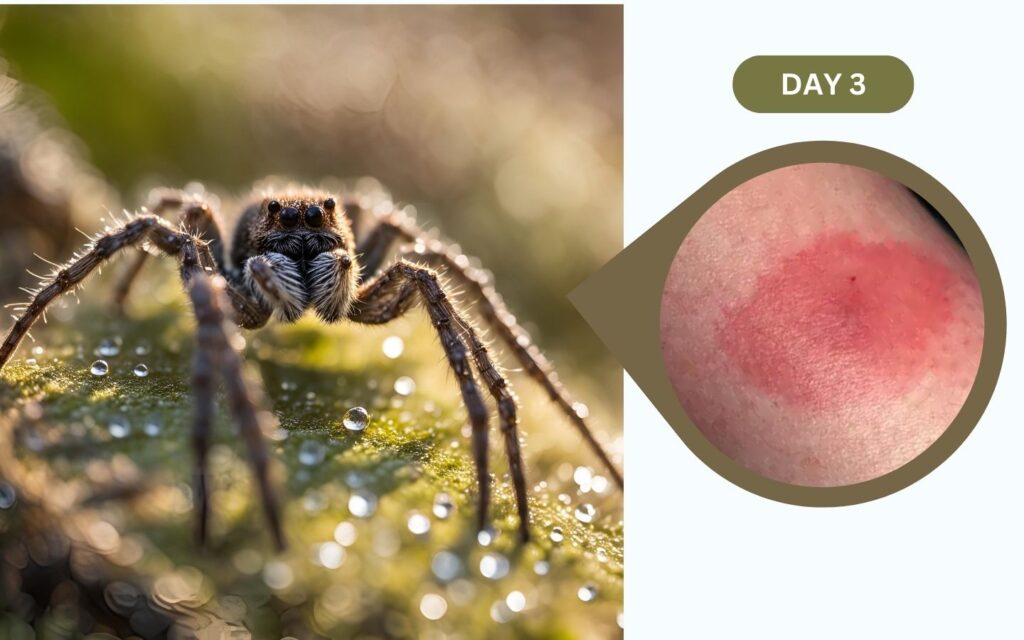
By the third day, symptoms might either improve or worsen. If the bite is not healing properly, you might notice increased pain, more pronounced swelling, and possibly pus or discharge, indicating an infection. The skin around the bite might appear redder, and the swelling could extend beyond the initial bite area. Signs of systemic symptoms, like fever or chills, may also begin to appear, though this is uncommon.
Identification of Signs That May Indicate Infection:
- Red streaks extending from the bite site.
- Increasing warmth, swelling, and pain.
- Discharge of yellow or green pus.
- Fever or general feeling of being unwell.
When to Seek Medical Help:
- If there is significant worsening of symptoms.
- Presence of severe pain that does not improve with pain relief.
- Signs of an infection, such as pus, fever, or spreading redness.
- If the bite does not show any signs of healing.
Day 4 Wolf Spider Bite Stage
By the fourth day, the bite should start showing signs of healing if it has been properly managed and is not infected. The swelling and redness should begin to subside, and any blistering should start to dry out. However, if the symptoms are worsening, with increasing pain, spreading redness, or new symptoms developing, this could indicate that the bite is not healing correctly or an infection has developed.
Key Signs of Improvement or Infection:
- Improvement: Reduction in pain, less redness, and shrinking of any blisters.
- Worsening: Persistent or spreading redness, increased warmth, pus formation, or new symptoms like fever.
Recommendations for Continued Care or Medical Evaluation:
- Continue cleaning the area and applying topical creams as needed.
- If signs of infection persist, seek medical evaluation for possible antibiotics.
- Avoid applying any non-prescribed ointments or creams without consulting a healthcare provider.
- Rest and avoid strenuous activities that could aggravate the bite area.
Monitoring the bite closely during these stages and knowing when to seek professional medical care is crucial to ensuring a proper recovery from a wolf spider bite.
Baby Wolf Spider Bite
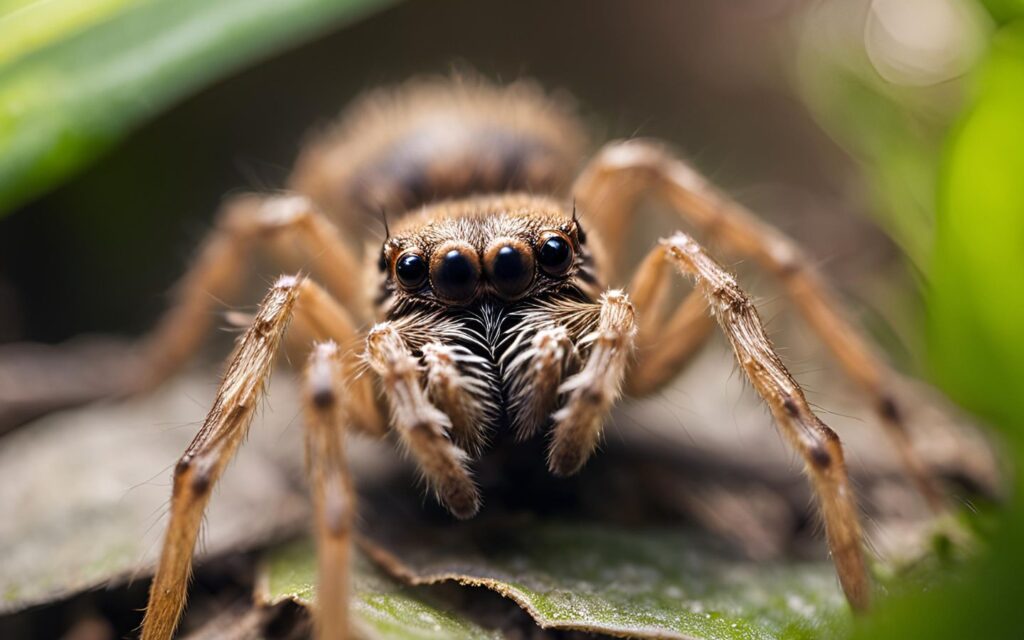
Explanation of How Wolf Spider Bites Might Appear on Infants or Young Children: Wolf spider bites on infants or young children typically present similarly to those on adults but may appear more alarming due to the sensitivity of young skin. The bite area often shows redness, slight swelling, and pain. Since children’s skin is thinner and more delicate, the bite mark might appear larger or more inflamed. Infants may become fussy or cry due to discomfort, making it crucial to identify the bite early.
Differences in Symptoms and Treatment Compared to Adults:
- Symptoms: Children may experience more pronounced symptoms, such as increased swelling, irritation, and potentially more severe allergic reactions. They might also develop a fever, which is uncommon in adults but can happen in young children as a response to pain or infection.
- Treatment: For children, it’s essential to use milder treatments. Clean the area gently with soap and water, apply a cool compress to reduce swelling, and use child-safe pain relievers like acetaminophen or ibuprofen (as per a pediatrician’s guidance). Avoid using strong topical creams without consulting a doctor. If symptoms worsen or signs of an allergic reaction occur, seek medical attention immediately.
Bad Wolf Spider Bite
Overview of Severe Reactions: A severe reaction to a wolf spider bite, though rare, can include intense pain, significant swelling, blistering, or symptoms indicative of an allergic response, such as difficulty breathing, dizziness, or hives. Secondary infections from scratching or inadequate care can also turn a mild bite into a serious issue, resulting in symptoms like pus, spreading redness, or fever.
Description of What Constitutes a “Bad” Bite and When to Consider Emergency Care:
- Constitutes a “Bad” Bite: Severe pain, persistent swelling, necrosis (tissue damage), blistering, signs of infection (red streaks, pus), or systemic symptoms like nausea and fever.
- Emergency Care: Seek immediate medical care if there are signs of an allergic reaction (swelling of the face, tongue, or throat), severe pain that does not respond to over-the-counter medications, signs of infection, or any symptoms affecting breathing or consciousness.
Wolf Spider Bite Symptoms
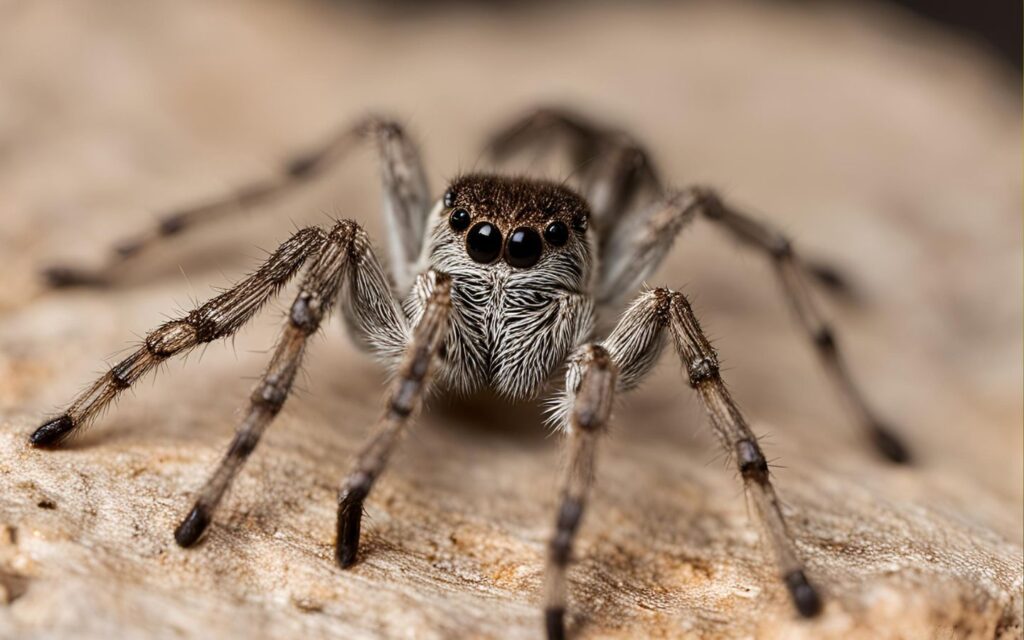
Common Symptoms of a Wolf Spider Bite:
- Pain: Usually mild to moderate and localized at the bite site.
- Redness and Swelling: Commonly develops around the bite area within the first few hours.
- Itching or Burning Sensation: Itching is mild but can be more pronounced in sensitive individuals.
- Slight Warmth: The area around the bite might feel warm to the touch.
Uncommon Symptoms That Might Require Immediate Attention:
- Fever or Chills: Indicates a possible infection.
- Red Streaks Extending from the Bite: A sign of lymphangitis, a severe infection.
- Severe Allergic Reactions: Difficulty breathing, rapid heartbeat, or severe swelling.
Wolf Spider Bite Mark
Typical Appearance of the Bite Mark:
- Wolf spider bites usually leave two small puncture marks where the fangs penetrate the skin. The marks are often surrounded by a red, slightly swollen area that can be itchy or tender.
- The bite site might develop into a raised bump or blister within a few days, depending on the body’s response.
How to Differentiate a Wolf Spider Bite Mark from Other Insect Bites:
- Comparison to Other Bites: Unlike mosquito or flea bites, wolf spider bites have a distinct pair of puncture marks. They usually do not have the target-like appearance of some other spider bites, like the brown recluse.
- Swelling and Pain: More intense than a typical insect bite but less severe compared to bites from venomous spiders like the black widow.
Wolf Spider Bite Treatment
Recommended At-Home Treatments:
- Cleaning the Bite: Wash the bite site with soap and water to prevent infection.
- Applying Ice: Use ice packs to reduce swelling and numb the area. Do not apply ice directly to the skin; wrap it in a cloth.
- Over-the-Counter Painkillers: Pain relievers like ibuprofen or acetaminophen can help reduce pain and swelling.
When to Use Antibiotics or Antihistamines:
- Antibiotics: Not usually necessary unless there are signs of infection, such as pus, increasing redness, or fever. A healthcare provider should prescribe antibiotics if an infection is confirmed.
- Antihistamines: Oral antihistamines can help manage itching and reduce the body’s allergic response. Topical antihistamines or hydrocortisone creams can also provide relief for localized symptoms.
FAQ
Will a wolf spider bite you in your sleep?
Wolf spiders are not aggressive and typically bite only when provoked or threatened. The likelihood of being bitten by a wolf spider while sleeping is low, as these spiders usually avoid human contact. However, bites can occur if a spider feels trapped, such as if it crawls into your bedding or clothing.
What does a wolf spider bite look like?
A wolf spider bite usually appears as two small puncture marks surrounded by a red, slightly swollen area. The bite may develop into a raised bump or blister, accompanied by mild irritation, redness, and occasional itching or burning.
Does a wolf spider bite on dogs?
Yes, wolf spiders can bite dogs if provoked. Canine-specific symptoms include localized pain, swelling, and redness at the bite site. In rare cases, dogs may exhibit mild allergic reactions, such as excessive licking or scratching of the area. Cleaning the wound and applying a cold compress can help, but if symptoms worsen, consult a veterinarian.
Can a wolf spider bite you?
Yes, wolf spiders can bite humans, but they do so only when threatened or trapped. Common situations leading to a bite include accidentally touching or stepping on a spider, or when the spider feels cornered.
Is a wolf spider bite poisonous?
Wolf spider venom is not highly toxic to humans. The venom causes mild localized reactions, such as pain and swelling, but it does not pose serious health risks to most individuals. Severe reactions are rare and usually related to allergic responses.
Is a wolf spider bite dangerous?
Generally, wolf spider bites are not dangerous and cause only mild symptoms like pain, redness, and swelling. Complications are uncommon but can include infection if the bite is not properly cared for. Severe reactions are rare and typically linked to individual allergies.
Does a wolf spider bite hurt?
Yes, a wolf spider bite can hurt, with pain levels ranging from mild to moderate. The intensity of pain depends on factors like the location of the bite, individual pain tolerance, and any allergic response. The pain usually subsides within a few hours to a couple of days.

